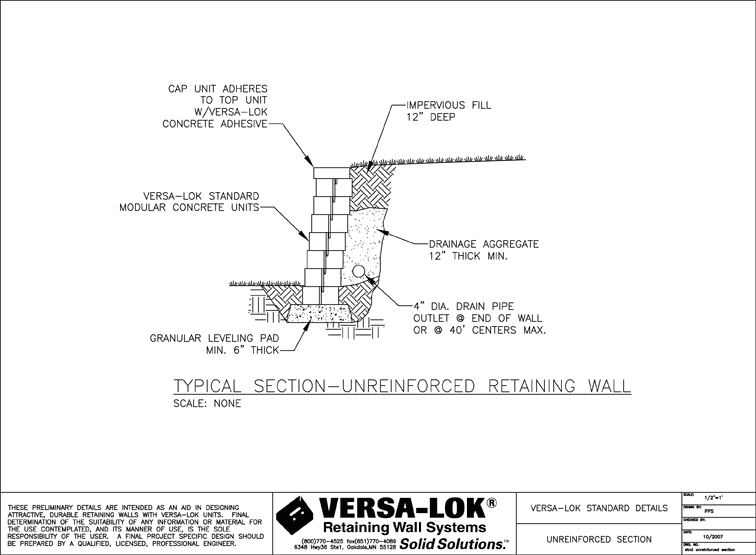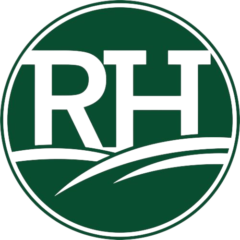Quick vocabulary lesson on the key components of a retaining wall
Here are some of the key terms to use when speaking about a retaining wall:
Segmental Retaining Wall (SRW): This refers to any wall that consists of individual blocks rather than a wall that is a single structure (such as poured concrete).
Base: The foundation of the wall. Usually made up of well compacted 2A limestone. 6″ deep minimum
Base course: The first layer of block and the most time consuming to lay because it needs to be completely level. This block should be completely buried/underground.
Batter: The stepping back of a retaining wall into a slope. When looking at the wall from the side, the wall should not be completely vertical/stand straight up and down. The amount of batter depends on the block style, but this is usually around 1/2″ to 3/4″ for each course of block.
Drainage aggregate: The stone that sits behind a wall. Typically this is #57 or 2B angular limestone. (Rounded stone will not stay put). This should be at least 12″ deep from the back of the wall block into the slope.
Drainage pipe: Not a French drain, but rather a pipe that sits behind the wall (usually behind the second course of block so that it can outlet at or above ground level). This is a 4″ diameter pipe that can be either corrugated, perforated pipe or firm pipe/PVC with holes in it.
Impervious fill: This is what sits on top of the backfill when the wall is all done. It can be soil, mulch, stone or a combination of these materials. Along with the caps, this can finish off the wall and restore the lawn or landscaping post-construction.
My go-to visual for retaining wall construction is this cross-section from Versa-Lok:

